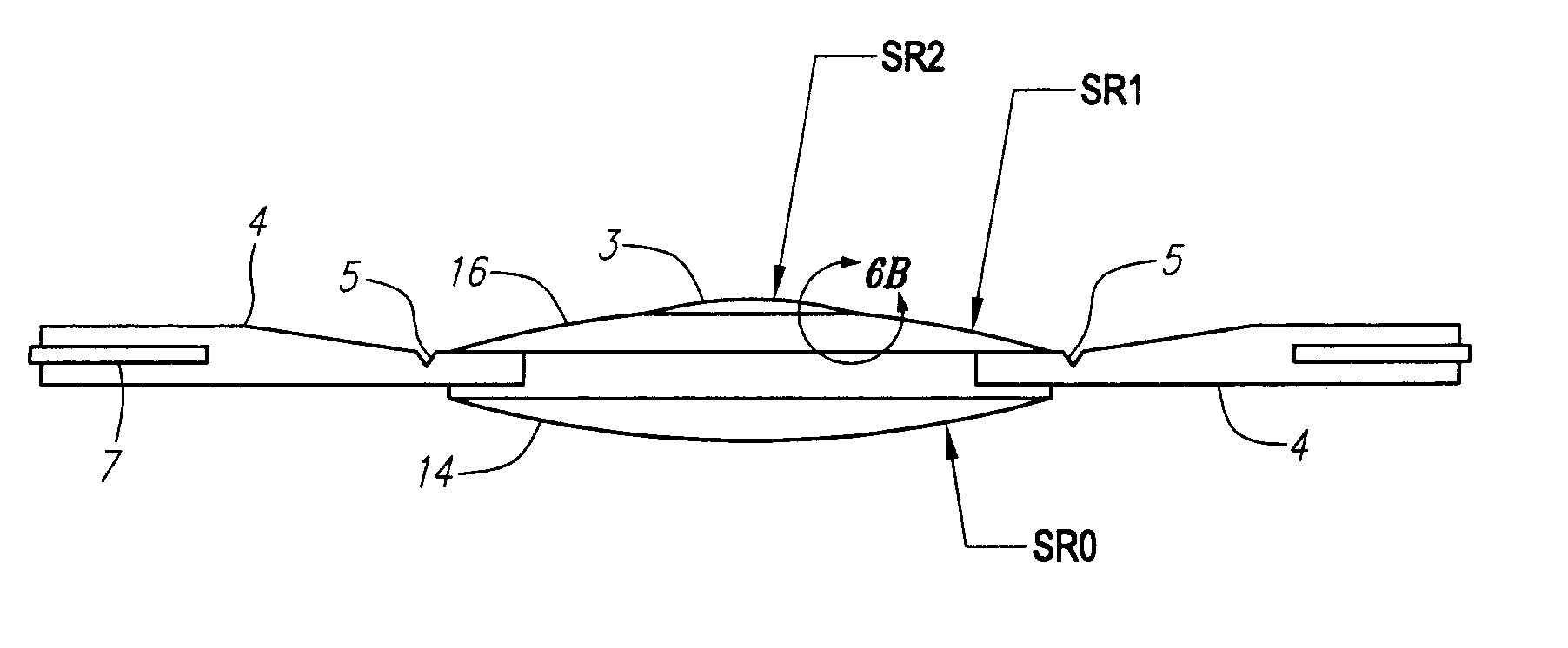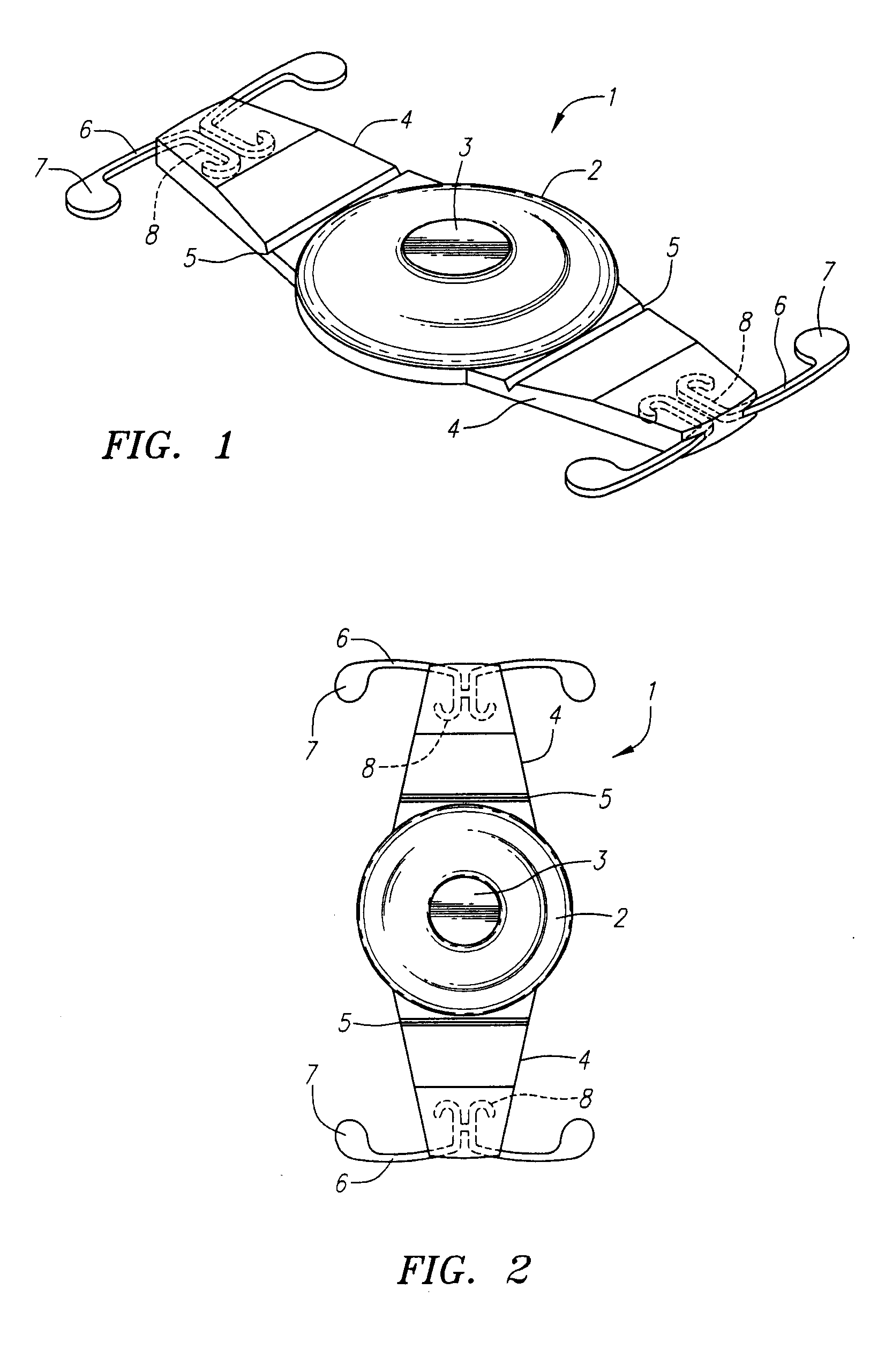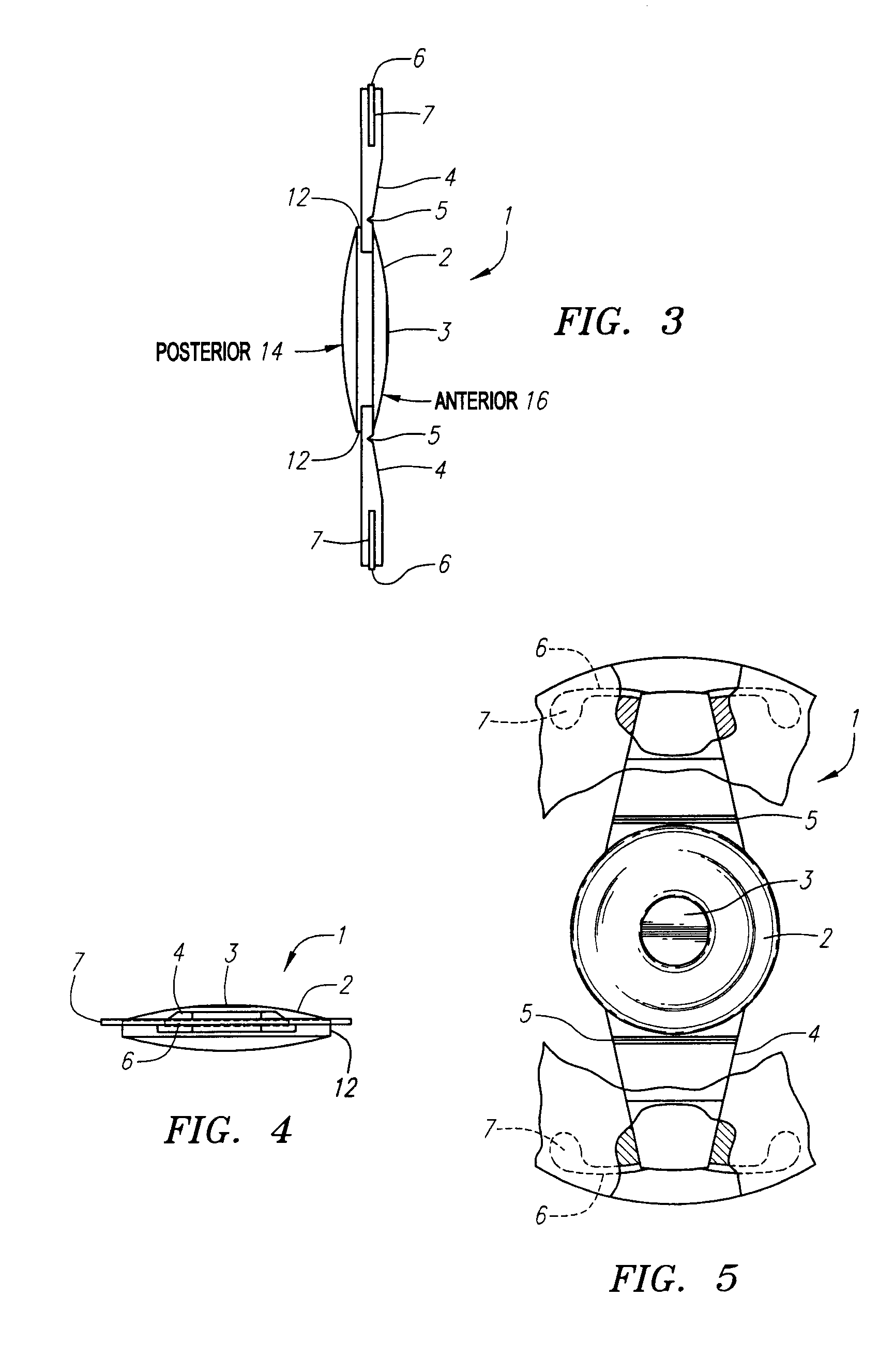Accommodative Intraocular Lens
a technology of intraocular lens and lens cap, which is applied in the field of accommodating intraocular lens, can solve the problems of limited materials from which the lens is made, the lens could be folded but not fixed well in the capsular bag, and the acrylic material is fractured if repeated flexing, so as to achieve the effect of increasing power
- Summary
- Abstract
- Description
- Claims
- Application Information
AI Technical Summary
Benefits of technology
Problems solved by technology
Method used
Image
Examples
Embodiment Construction
[0017] Turning now to the Figures, a preferred embodiment is illustrated in detail comprising an intraocular lens 1 formed as a flexible solid optic 2 preferably made of silicon, and flexible extending portions 4 of any suitable form which may be plate haptics or fingers which are capable of multiple flexations without damage and formed, for example, of silicone. The optic 2 and haptics 4 preferably are uniplanar, and one or more haptics 4 extend distally from opposite sides of the optic 2.
[0018] According to the present invention, the optic 2 has a central blended area 3. The lens 1 preferably comprises an accommodating intraocular lens currently available from eyeonics, inc., Aliso Viejo, Calif., such as shown in U.S. Pat. No. 6,387,126, typically with a 4.5 mm diameter optic, but with a 1.0 to 2.5 mm diameter central area 3 and which has an added of less than 1 dioptor of power in the center of the lens 1. The area 3 is on the anterior side of the lens, and the posterior side ca...
PUM
 Login to View More
Login to View More Abstract
Description
Claims
Application Information
 Login to View More
Login to View More - R&D
- Intellectual Property
- Life Sciences
- Materials
- Tech Scout
- Unparalleled Data Quality
- Higher Quality Content
- 60% Fewer Hallucinations
Browse by: Latest US Patents, China's latest patents, Technical Efficacy Thesaurus, Application Domain, Technology Topic, Popular Technical Reports.
© 2025 PatSnap. All rights reserved.Legal|Privacy policy|Modern Slavery Act Transparency Statement|Sitemap|About US| Contact US: help@patsnap.com



